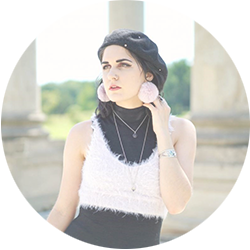







Welcome Back
Sign in to be closer to your community!
Follow other divas, like and comment
on their posts, message them, and see
who loved your posts!
Invalid username or password
You have not verified your account by clicking on the link we sent you via email. Please check your email folders (including your Spam folder) and click on the verify link sent.
Email is required
Password is required








Join FashionPotluck.com
Create your own profile in order to create content, follow other divas and like their posts, use our own messenger, and be a part of a growing international women community!
WELCOME TO OUR COMMUNITY
Fashion Potluck -
the first social media
platform for women.
You are free to read/watch & create content,
express your true self, and interact with others.
Join for free
Already a member? Log in here.
Purchase Alert
Dear Queen, you can only buy from one seller at the time. Please finish this purchase first in order to buy from another FP member
Comments
Please select one platform to continue
Please select one platform to continue
Please select one platform to continue
Please select one platform to continue
Please select one platform to continue
Please select one platform to continue
Please select one platform to continue
Please select one platform to continue
EDITOR APPROVED
You are wondering what is this 'Editor Approved'?
Well, this is pretty awesome! In order for the post to qualify and receive this accolade, it has to have a minimum of 700 words and two images (at least one original).
Receiving this accolade means two things: 1) Your content is amazing! Good job! 2) Your content qualifies for our monetization program. Every week two of the most read posts receive monetary rewards.
Have the badge & want to monetize your content?

LIFESTYLE


There are numerous aspects to take into account when selecting the ideal fabric for baby clothing and accessories. You should look for textiles that are not only delicate, comfy, and soft on your baby's skin, but also long-lasting, simple to maintain, and useful for your family's way of life. You can also be concerned about choosing textiles that are safe for the environment and devoid of irritants or dangerous chemicals.
It can be difficult to start your shopping spree when keeping all of these factors in mind, so here are a few tried-and-true materials that have emerged as some of the top choices for babies that you can’t go wrong with.
Bamboo

For baby garments and accessories, bamboo fabric is a more recent and less well-known option, but it is swiftly gaining favor with parents looking for eco-friendly and sustainable materials. Bamboo grows quickly and is a natural resource that needs little water and no chemicals to flourish. Fabric made from this sustainable plant is also naturally moisture-wicking, antimicrobial, and hypoallergenic, making it perfect for babies because they have sensitive skin and are more prone to rashes and allergies. Moreover, bamboo fabric is exceptionally soft and lightweight, making it ideal for warmer climates or for layering in winter. Bamboo cloth is a cozy and environmentally friendly option for sleepwear, baby wraps, and crib sheets.
Cotton

For all the good reasons, cotton is one of the most often used materials for baby clothing and accessories. Organic cotton is grown using safe and sustainable agricultural techniques, as opposed to conventional cotton, which is frequently treated with harsh chemicals and pesticides. If you invest in organic baby clothing, it will mean it’s free of dangerous pollutants that would otherwise result in skin rashes, allergies, or other health issues. Furthermore, organic cotton is extraordinarily soft, breathable, and simple to maintain making it perfect for cute high-quality baby knitwear. When it comes to your baby's needs, cotton knitwear will show itself to be a flexible and useful option whether you're looking for rompers, cardigans, hats or booties. Nothing compares to the way cotton feels against your baby's tender skin!
Wool

Since ancient times, wool has been a traditional fabric used to keep babies warm and comfortable. Wool is the ideal material for cold or drafty conditions since it is a natural insulator that traps heat and controls body temperature. Moreover, wool is permeable to air, avoiding overheating and sweating. Wool is also naturally flame-resistant and hypoallergenic, making it a secure material for infant clothing and accessories. The best manufacturers use merino wool because of its reputation for softness and comfort. Wool may need a little more maintenance and care than other materials, but the advantages of its warmth, toughness, and natural qualities make it a wise choice for your baby's clothing.
Muslin

Muslin is a thin, loosely woven fabric that is frequently used for baby wraps and swaddling blankets. Muslin is a comfy and secure option for newborns or infants because of how soft and gentle the fabric is on your baby's sensitive skin. Muslin is also very breathable, allowing air to flow and avoiding overheating or perspiration. Furthermore, adaptable and strong, muslin gets softer after each wash and holds up nicely over time. Muslin is a useful and cozy material for your baby's requirements, whether you use it for burp rags, lightweight blankets, or swaddling.
As a parent, you only want the best for your little bundle of joy, so choosing the right baby's clothing and accessories should be your priority, since it can affect the baby’s comfort, safety, and general well-being. You can design a wardrobe that satisfies the needs and preferences of your family by choosing textiles that are kind, soft, resilient, and useful. Each of these materials—cotton, bamboo, wool, or muslin—has distinct advantages and qualities that can make it a fantastic choice for dressing up. You can make sure that your kid is comfy, warm, and fashionable from head to toe by using the appropriate fabrics and materials.
Comments
Related Posts
- What Makes Men’s Accessories Worth Investing In Today? by Ekim Fashion 0
- How to Plan Seasonal Plush Inventory Without Overbuying by Harnel Inc 0
- 6 Winter Season Reasons to See a Dermatologist ASAP by Monica Quinn 0
More Posts
- Affordable Embroidery Services | Free Design Assistance by Embroidery Designs 0
- Beyond the Hardwood: Finding the Fun in Absurd Physics Games like Basket Random by Suzanna Brown 0
- Why Cowboy Ties Are Making a Bold Fashion Comeback This Year by Rocky Mountain Western 0
Vote content out
Reason for voting this content out?
Reason for voting this content out?


 Login with Google
Login with Google Login with Twitter
Login with Twitter






 by
by
Add Comments